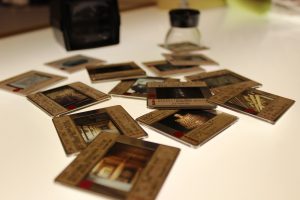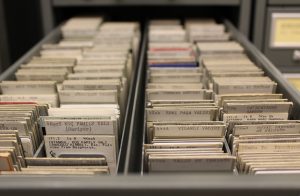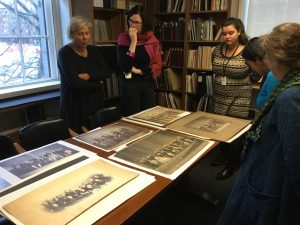Dear Colleagues,
We are excited to share a paid internship opportunity with you from Harvard Library. Tozzer Anthropology Library and the Fine Arts Library will host a student in the summer of 2023 as part of our commitment to diversify the collections and provide learning opportunities to students. The student will be part of a larger cohort working on EDIBA (Equity, Diversity, Inclusion, Belonging, and Anti-Racism) projects across Harvard Library.
The Contemporary Indigenous Art Internship is centered on increasing representation of contemporary Indigenous art of North America within the research collections of both libraries. Through this experience the intern would also get to engage in complex issues such decolonizing library spaces through collections work.
Please note that the Application Deadline is February 28.
Responsibilities:
- While working in collaboration with bibliographers from both libraries, the intern will undertake collections analysis to identify what each library is collecting related to contemporary Indigenous art of North America as well as to identify gaps in existing collections.
- In collaboration with bibliographers from both libraries, help to create a collaborative collection development policy.
- Help bibliographers identify and document areas to expand within these two research collections.
- Work with both libraries to identify ways of promoting contemporary North American Indigenous art research collections to a wider audience.
Basic Qualifications:
- Currently enrolled in a graduate library science program or a related, graduate-level field of study
- Demonstrated commitment to Equity, Diversity, Inclusion, Belonging and Anti-racism. For more information regarding Harvard Library’s commitment to Equity, Diversity, Inclusion, Belonging, and Anti-Racism, please see https://projects.iq.harvard.edu/hlhr/diversity-inclusion-belong-antiracism
Additional Qualifications:
- Familiarity with Indigenous topics or issues within North America.
- Some knowledge of or an enthusiasm for learning about the landscape of contemporary Indigenous art and artists in North America.
- An awareness or willingness to learn more about culturally sensitive issues and topics within Indigenous communities in North America.
- Experience undertaking a more advanced research project that draws upon library resources. For example, engaging in research for a graduate level course.
Physical Demands:
- Ability to lift up to 25 lbs.
- This position requires bending, squatting, stretching, and climbing small step stools
- Possible exposure to dust and mold
Work Environment:
While the primary workspace is Tozzer Library, the intern would have a floating workspace at the Fine Arts Library.
Compensation:
- Local housing will be provided
- $15 an hour
- $1,000 travel/moving stipend
Dates of Internship:
- Summer 2023 (Start Date: TBD)
- Offers made late April
- 30 hours per week
To Apply for the Internship:
Please send your cover letter to HL_EDIBA@harvard.edu.
In the email subject line, please use the following naming convention: 2023 EDIBA SUMMER INTERN_TozzerFAL
Deadline: February 28, 2023
Harvard requires COVID vaccination for all Harvard community members. Individuals may claim exemption from the vaccine requirement for medical or religious reasons. More information regarding the University’s COVID vaccination requirement, exemptions, and verification of vaccination status may be found at the University’s COVID-19 Vaccine Information webpage: http://www.harvard.edu/coronavirus/covid-19-vaccine-information/.













